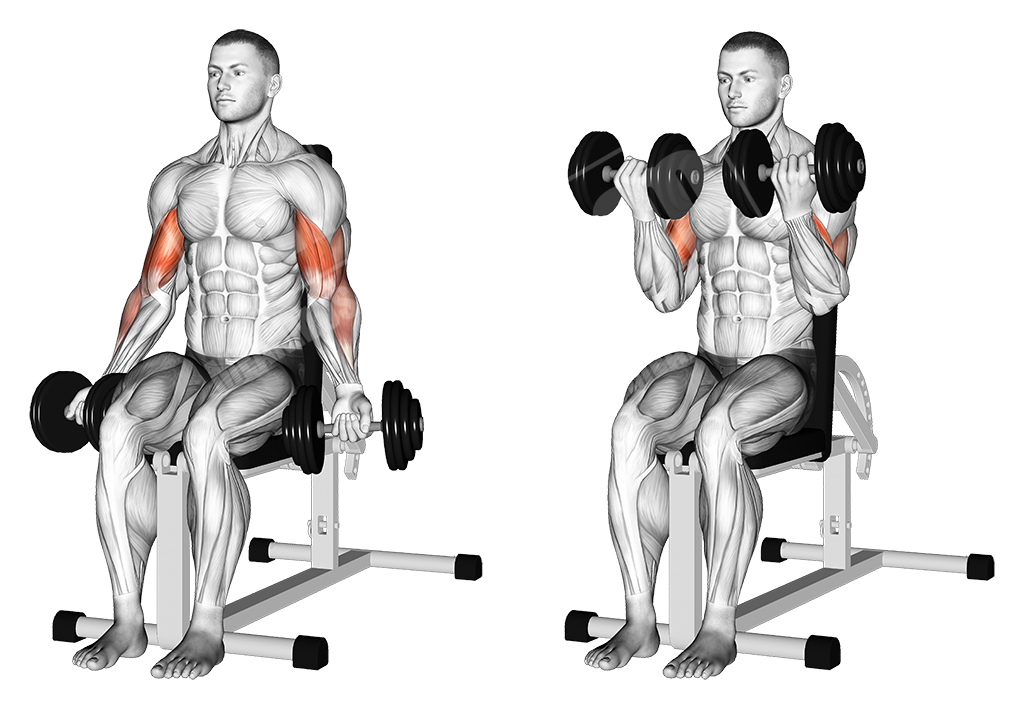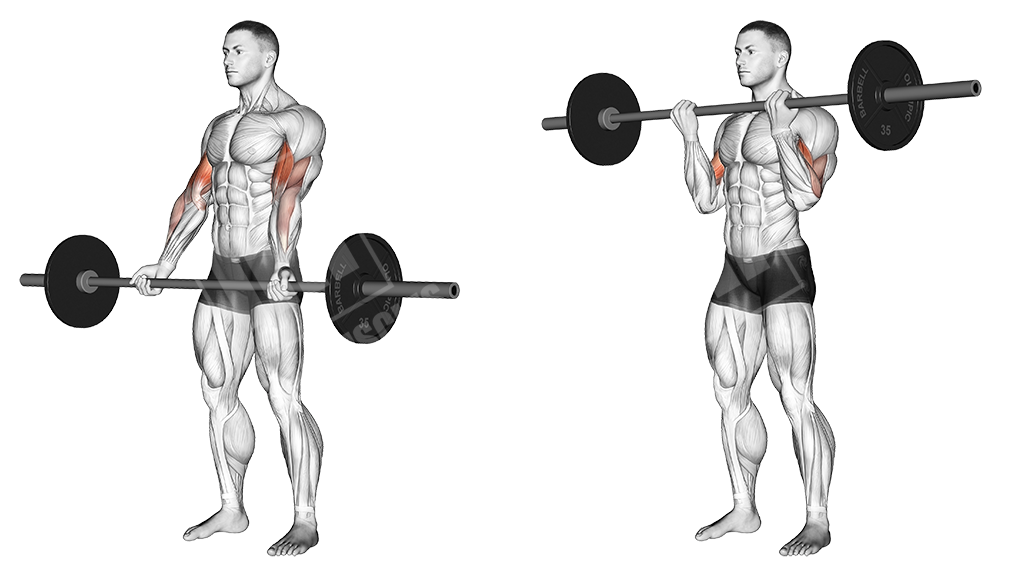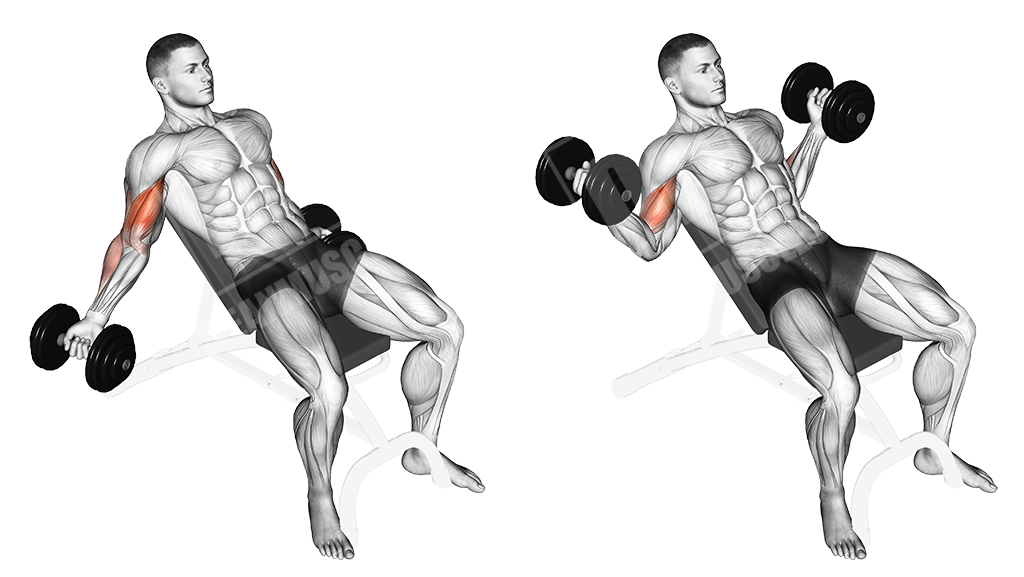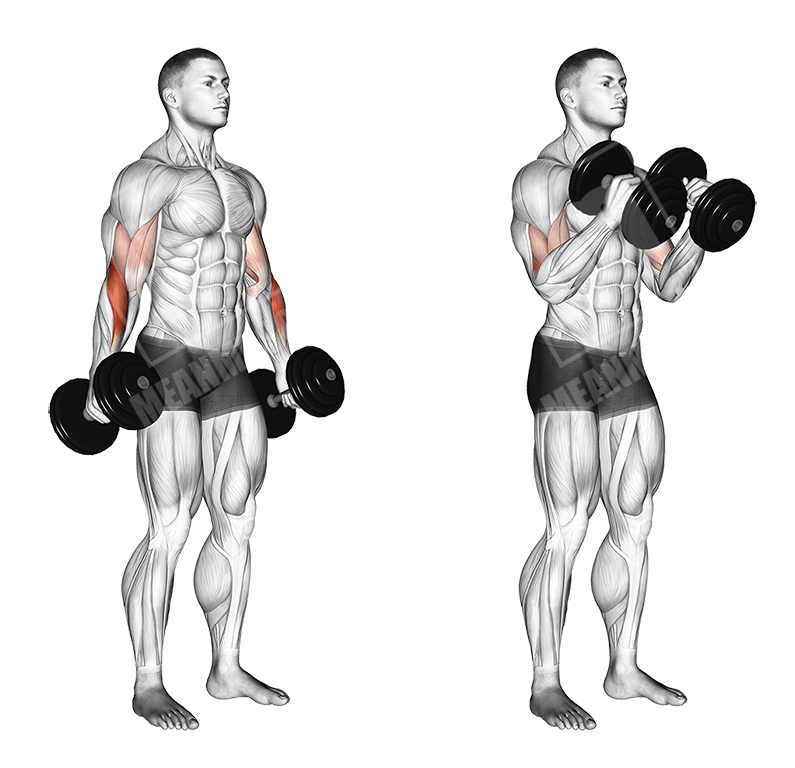Introduction
For this bicep workout, we will present to you a specific set of exercises, designed to help you grow MASSIVE, thick biceps. The workout revolves around free-weight exercises, that will engage not only the biceps, but also its surrounding pulling muscle groups- The Brachialis and forearms.
Ultimately, over the long run this will help you develop solid looking biceps that are up to par with the whole musculature of the arms, if of course, the workouts are appropriately integrated within the whole routine.
The free weight exercises are in the workout to specifically help you lift heavier weights and therefore build bigger muscle mass.
Workout Priorities
The workout focuses on both types of hypertrophy, starting off with low-intensity, high-rep sets and moving on to heavier weights and intense sets of ~6 repetitions.
The goal here is to develop both types of hypertrophy- Myofibril and sarcoplasmic, giving a dense, full look of the bicep musculature.
Exercises
| Exercise | Sets | Repetitions |
|---|---|---|
| Seated dumbbell curl | 4 | 15,12,10,10 |
| Standing barbell curl | 2 | 10 |
| Barbell preacher curl | 3 | 10,8,6 (last set until failure) |
| Incline bench dumbbell curl | 2 | 8,6 (last set until failure) |
| Dumbbell hammer curl | 1 | 12 |
Exercise Map
Seated dumbbell curl

Execution
- Grab a pair of dumbbells and sit down on the bench
- Rest your back easily on the backrest and place your legs stably
- Turn your palms so that they are facing forward
- Curl both dumbbells simultaneously, without moving your elbow forward
- Contract the biceps and hold the contraction for up to 1 second
- Return to the initial position slowly and repeat
Standing barbell curl

Execution
- Grab the barbell at shoulder width and stand with your feet stably
- Keep your back straight and head looking forward
- Curl the barbell up, with your upper arm being static
- Contract the biceps and hold for up to 1 second
- Let the barbell down slowly and repeat
Barbell preacher curl

Execution
- Grab the barbell at shoulder width and sit down on the preacher
- Place your arms on the pad so that the armpits are right at the edge of it
- Look forward and let the barbell go down slowly and fully
- Curl the barbell up until full biceps contraction is reached
- Let the bar down to its initial position
Incline bench dumbbell curl

Execution
- Grab the dumbbells and sit down on the bench, resting your head and back comfortably
- Open your arms out so that the palms are facing to the sides
- Curl the dumbbells up slowly, contracting the biceps and holding the contraction for a split second
- Let the dumbbells down slowly, stretching the biceps
- Repeat
Dumbbell hammer curl

Execution
- Grab the dumbbells and stand on your feet stably
- Keep the back straight and the wrist in a position where your palms are facing your legs
- Curl the dumbbells up, without rotating the wrist
- Contracting the forearms and the biceps, hold the contraction briefly
- Return to the original position and repeat
Workout Tips
Pyramid
Due to the fact this is a more advanced workout that includes high-intensity methods, it would be most adequate to start off with low intensity and move up to the heavier, 6-8 rep sets. This will ultimately prevent injuries of the working muscles’ tendons and joints they are attached at, but will also help you get the most out of each repetition.
Read more on the Pyramid training.
Peak Flexion
For most of the exercises, you can apply the peak flexion method, which is simply holding the contraction of the working musculature for a split second. This will account for more prominent development and a better mind-muscle connection with the muscle fibers.
Post-Failure Support
If you are a more advanced trainee, you can use the help of a spotter to get you past failure, using the “Forced Repetitions” method. Of course, this shouldn’t be done excessively but rather get you an extra 1-2 repetitions beyond failure. This would have a very pleasant hypertrophy stimulus, for a well-trained and adapted muscle.
Conclusion
This workout, designed to help you develop more massive biceps, is based on a couple of things- Working your way up in weights, through free weight exercises, that ultimately allow you to lift really heavy weights and account for more prominent growth.
The workout also relies heavily on peak flexion and for more advanced trainees, intense methods like forced repetitions, that allow for further growth of the working musculature.
The workout uses more exercises and has a smaller number of sets for each of them, allowing for diversity within the workout and therefore, different work upon the muscle group, from different angles.
This accounts for better overall development, as different working angles engage different muscle sectors.

